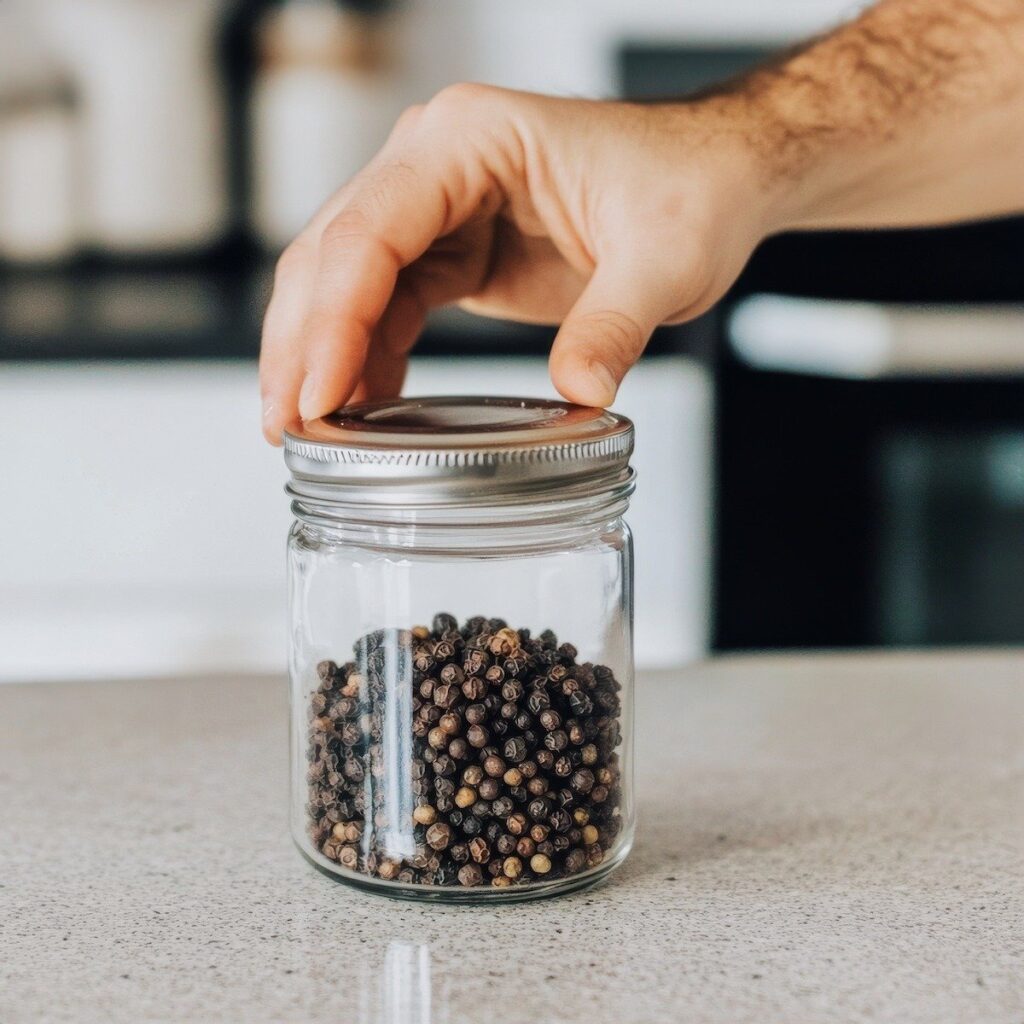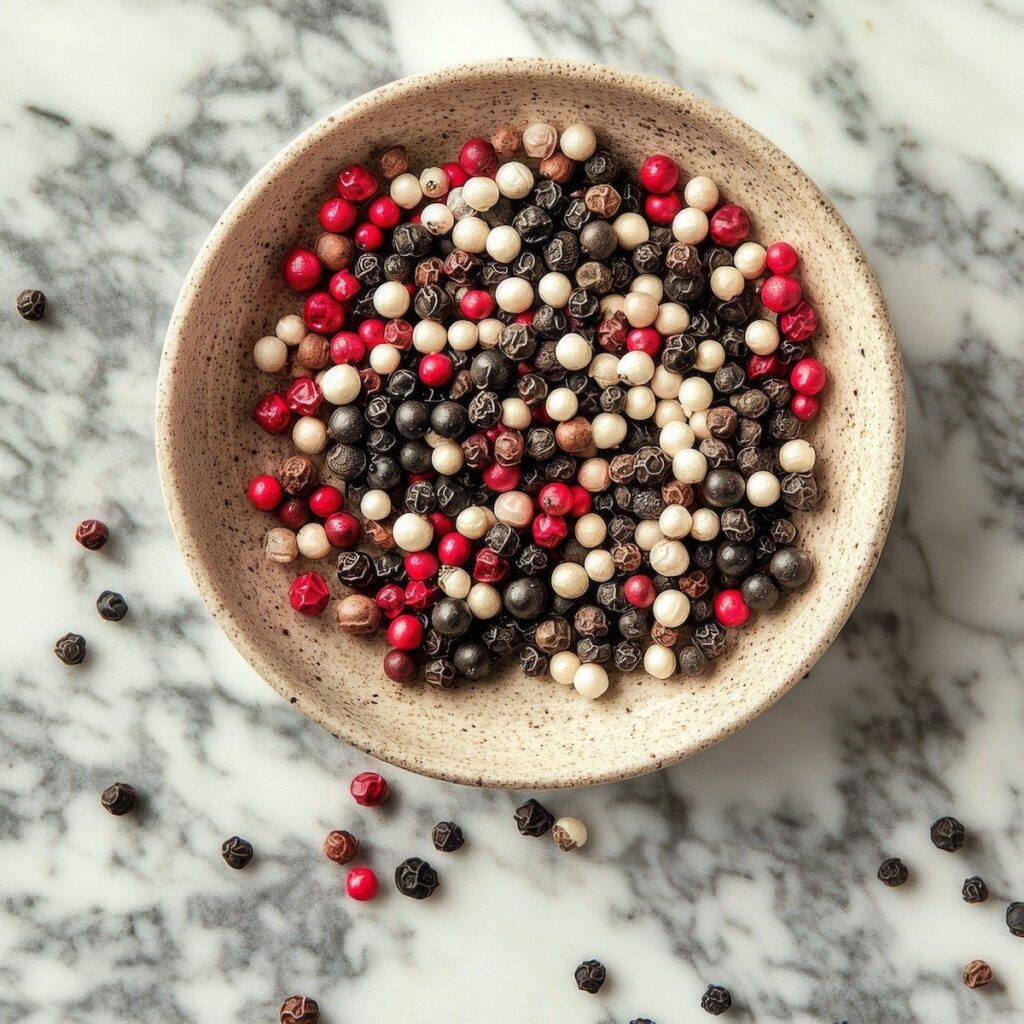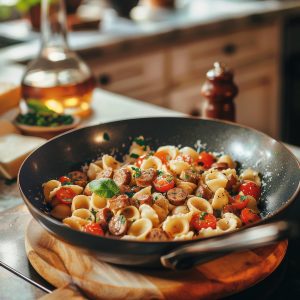Maximize Flavor with Pepper: Storage, Grinding, and Cooking Tips
Pepper is more than just a kitchen staple—it’s the spice that has shaped culinary traditions worldwide. Whether black, white, green, or red, pepper is a versatile ingredient that enhances the flavor of countless dishes.
From its spicy, sharp bite to its subtle heat, pepper can elevate everything from simple salads to rich, complex stews. It’s no wonder this ancient spice has been prized for centuries, not just for its taste but also for its health benefits, which include aiding digestion and providing antioxidants.
In this post, we’ll explore the different varieties of pepper, how to use them effectively in your cooking, and why freshly ground pepper makes all the difference. You’ll also learn about the fascinating history of this beloved spice, from its origins in India to its role in the global spice trade.
Whether you’re using whole peppercorns or ground pepper or experimenting with blends, understanding each type’s unique characteristics will transform how you season your food. Get ready to appreciate pepper in a whole new way as we dive into its culinary versatility and share tips for making the most of this powerful ingredient in your kitchen!
So, What Is Pepper?
Pepper, scientifically known as Piper nigrum, is one of the most commonly used spices worldwide. It has a long history of use and has been prized for its medicinal and culinary properties for centuries. Although pepper is native to India, it is now grown in many other tropical regions worldwide, including Indonesia, Vietnam, Brazil, and Madagascar.
It is produced from the fruit of the pepper plant. The fruit, called a drupe, grows in clusters on the vine and is harvested when it turns red. The outer layer of the drupe is removed, revealing the seed inside. The seed is then dried and used as the spice we know it as.
There are several different types, each with its own distinct flavor profile. The most commonly used types are black, white, and green pepper. Black pepper is the most common and is made by drying the unripe fruit until it turns black. White pepper is made from ripe fruit and soaked to remove the outer layer before drying. Green pepper is made from the unripe fruit, preserved in brine or vinegar.
It has been used for medicinal purposes for thousands of years. In ancient times, it was believed to have healing properties and was used to treat various ailments, including digestive issues, toothaches, and fever. Modern research has confirmed many of these traditional uses and identified other potential health benefits of pepper.
One of the most well-known health benefits is its ability to aid digestion. It stimulates the production of digestive juices, which can help to break down food more efficiently and improve overall digestion. It is also believed to have anti-inflammatory properties, which may help reduce gut inflammation and improve digestive health.
Pepper is also a potent antioxidant, which means it can help protect the body against damage caused by free radicals. Free radicals are unstable molecules that can damage cells and contribute to developing chronic diseases, such as cancer and heart disease. Antioxidants neutralize free radicals and help prevent this damage.
In addition to its medicinal properties, it is also widely used as a culinary spice. It is a staple in many cuisines worldwide and is used to flavor various dishes, from soups and stews to meats, vegetables, and sauces.
Popularity
One of the reasons pepper is such a popular spice is its versatility. Its bold, spicy flavor can add depth and complexity to many different dishes. It can be used as a seasoning for meats and vegetables, a rub for grilled or roasted meats, or as a finishing touch on soups and stews.
Another reason for its popularity is its availability. Pepper is widely available and relatively inexpensive, making it accessible to people worldwide. It is also easy to store and can be used in its whole and ground forms, making it convenient for home cooks and professional chefs.
Despite its ubiquity, there are some essential things to remember when using pepper in cooking. One of the most important things to do is to use freshly ground pepper whenever possible. Freshly ground pepper has a more complex flavor profile than pre-ground pepper, which can quickly lose its flavor and aroma over time.
Another important consideration is the amount of pepper used in a dish. It can quickly overwhelm other flavors, so it is essential to use it in moderation. It is also a good idea to taste the dish as you go, adding more pepper gradually until you achieve the desired level of spiciness.
Finally, it is important to store it properly to maintain its flavor and freshness. Whole peppercorns can be stored in an airtight container in a cool, dry place for up to two years, while ground pepper should be used within six months for best results.
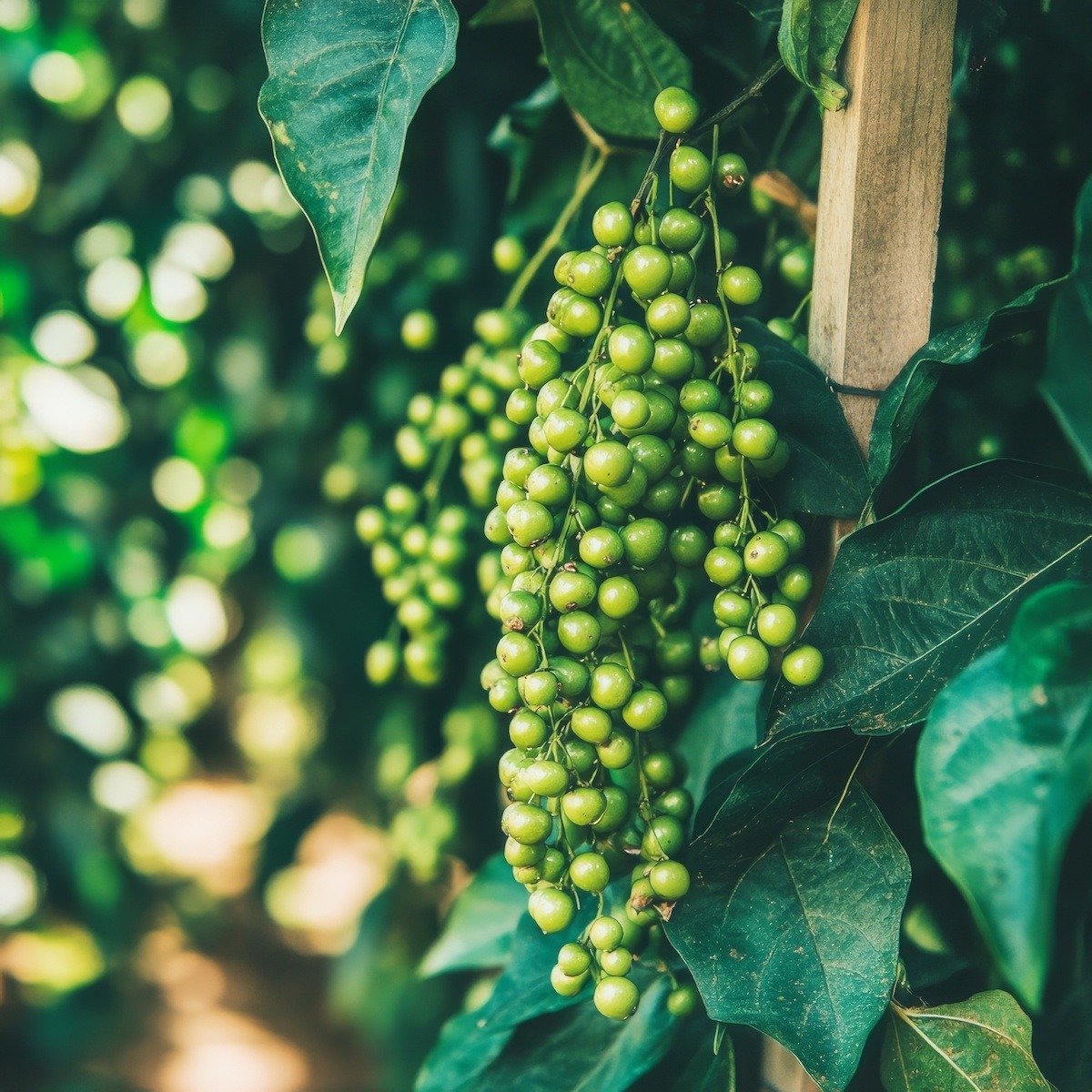
Types of Pepper
There are several types of pepper, each with its distinct flavor profile. Here are some of the most common types of pepper, where they come from, and what they taste like:
- Black pepper: Black pepper is the most common type of pepper and is produced from the unripe fruit of the pepper plant. It is native to India but is now grown in many other tropical regions worldwide. Black pepper has a sharp, spicy flavor with a slightly earthy undertone.
- White pepper: White pepper is made from the ripe fruit of the pepper plant. The outer layer of the fruit is removed, leaving only the seed, which is then dried and ground into a fine powder. White pepper has a milder and less complex flavor than black pepper, with a slightly musty and earthy taste.
- Green pepper: Green pepper is made from the unripe fruit of the pepper plant, which is preserved in brine or vinegar. It has a milder flavor than black or white pepper and a slightly sour taste.
- Pink pepper: Pink pepper, also known as red pepper, is not an actual pepper but is made from the berries of a different plant, the Schinus molle tree. It is native to South America and has a fruity, floral flavor and mild spiciness.
- Sichuan pepper: Sichuan pepper, also known as Szechuan pepper, is native to China and has a unique flavor profile that is spicy and numbing. It has a citrusy, almost lemon-like flavor with a slightly bitter undertone.
- Long pepper: Long pepper is native to India and is less commonly used than black or white pepper. It has a complex, spicy flavor with a slightly sweet taste and a hint of nutmeg.
- Cubeb pepper: Cubeb pepper is native to Indonesia and has a flavor similar to that of black pepper but with a slightly more complex taste. It is slightly sweet and fruity, with a hint of clove.
- Tellicherry pepper: Tellicherry pepper is a type of black pepper grown in the Tellicherry region of India. It has a more complex and fruity flavor than regular black pepper and a slightly milder spiciness.
Each type of pepper has its own unique flavor profile, and choosing the right one can help to enhance the flavor of a dish and bring out its best qualities.
How Long Do Peppercorns Hold Their Flavor?
Whole peppercorns retain their flavor significantly longer than their ground counterparts, making them a preferred choice for those who seek maximum freshness and potency in their culinary endeavors.
Shelf Life of Whole Peppercorns:
Optimal Freshness:
Whole peppercorns maintain their best flavor and aroma for up to 4 years when stored properly.
Extended Shelf Life:
They can remain usable for up to 5 years or more with ideal storage conditions, although the flavor may gradually diminish over time.
Tips to Maximize Flavor Retention:
- Store in Airtight Containers:
- Use Sealed Containers:
Opt for glass jars with tight-fitting lids, stainless steel containers, or high-quality spice jars to minimize exposure to air. - Avoid Original Packaging:
Transfer peppercorns from their original bags to containers that provide a better seal against moisture and air.
- Use Sealed Containers:
- Keep Away from Light:
- Dark Storage Areas:
Store peppercorns in a dark pantry, cupboard, or container that blocks out light to prevent degradation from UV rays. - Opaque Containers:
Using opaque containers can further protect against light exposure.
- Dark Storage Areas:
- Maintain a Cool, Dry Environment:
- Stable Temperature:
Keep peppercorns in a location with a consistent, cool temperature, away from heat sources like stoves, ovens, or direct sunlight. - Low Humidity:
Ensure the storage area is dry to prevent moisture from affecting the peppercorns, which can lead to clumping or mold growth.
- Stable Temperature:
- Avoid Frequent Handling:
- Limit Air Exposure:
Each time the container is opened, air enters, potentially affecting the peppercorns’ freshness. Consider purchasing smaller quantities if you don’t use them frequently. - Use Clean Utensils:
When dispensing peppercorns, use dry, clean utensils to prevent introducing moisture or contaminants.
- Limit Air Exposure:
- Consider Whole vs. Ground:
- Grinding Freshly:
For the best flavor, grind peppercorns just before use using a pepper grinder or mortar and pestle. This ensures that you experience the full aroma and potency of the spices. - Variety Selection:
Different varieties of peppercorns (e.g., black, white, green, pink) may have slightly different storage needs, but the general principles remain the same.
- Grinding Freshly:
Additional Considerations:
- Freezing Whole Peppercorns:
- Not Typically Necessary:
Whole peppercorns already have a long shelf life when stored correctly; freezing is generally unnecessary. - Potential Moisture Issues:
If you freeze them, ensure they are in airtight, moisture-proof containers to prevent condensation and clumping when thawed.
- Not Typically Necessary:
- Buying in Bulk vs. Small Quantities:
- Frequent Use:
Buying in bulk can be economical without sacrificing freshness if you use peppercorns regularly. - Infrequent Use:
For occasional use, purchasing smaller quantities ensures you always have fresh peppercorns on hand without long-term storage concerns.
- Frequent Use:
- Labeling:
- Track Purchase Dates:
Label containers with the purchase or expiration date to keep track of their age and ensure you use them while they’re freshest.
- Track Purchase Dates:
Signs That Peppercorns Have Lost Their Freshness:
- Dull Aroma:
Fresh peppercorns have a strong, pungent aroma. A noticeable decline in scent indicates loss of potency. - Lack of Flavor:
If ground pepper made from the peppercorns tastes flat or weak, the whole peppercorns may have lost their robust flavor. - Appearance:
While whole peppercorns don’t change color significantly, any signs of mold, discoloration, or moisture indicate they should be discarded.
Following these storage guidelines ensures that your whole peppercorns remain flavorful and aromatic for several years. Investing in whole peppercorns and grinding them as needed enhances the taste of your dishes and offers a more economical and sustainable approach to seasoning your culinary creations.
What About After It Is Ground?
When stored properly, ground pepper typically maintains its best flavor for 2 to 3 years. However, for the optimal taste and aroma, it’s recommended to use it within 1 to 2 years of purchase. Over time, ground pepper can lose its potency and become less flavorful, which may affect the overall taste of your dishes.
Tips to Maximize Flavor Retention:
- Store in an Airtight Container:
- Use containers that seal tightly to prevent exposure to air, which can accelerate the loss of flavor.
- Keep Away from Light:
- Store ground pepper in a dark place, such as a pantry or a cabinet, to protect it from light that can degrade its quality.
- Maintain a Cool, Dry Environment:
- Heat and moisture can cause ground pepper to lose its flavor more quickly. Please don’t forget to store it near stoves, ovens, or sinks.
- Avoid Frequent Exposure:
- Each time you open the container, fresh air enters, diminishing the pepper’s potency. If you don’t use it frequently, consider buying smaller quantities.
- Check for Freshness:
- Before use, you can perform a simple taste or smell test. If the pepper has a dull aroma or lacks the sharpness you expect, it might be time to replace it.
Following these storage guidelines ensures that your ground pepper remains flavorful and enhances your culinary creations for as long as possible.
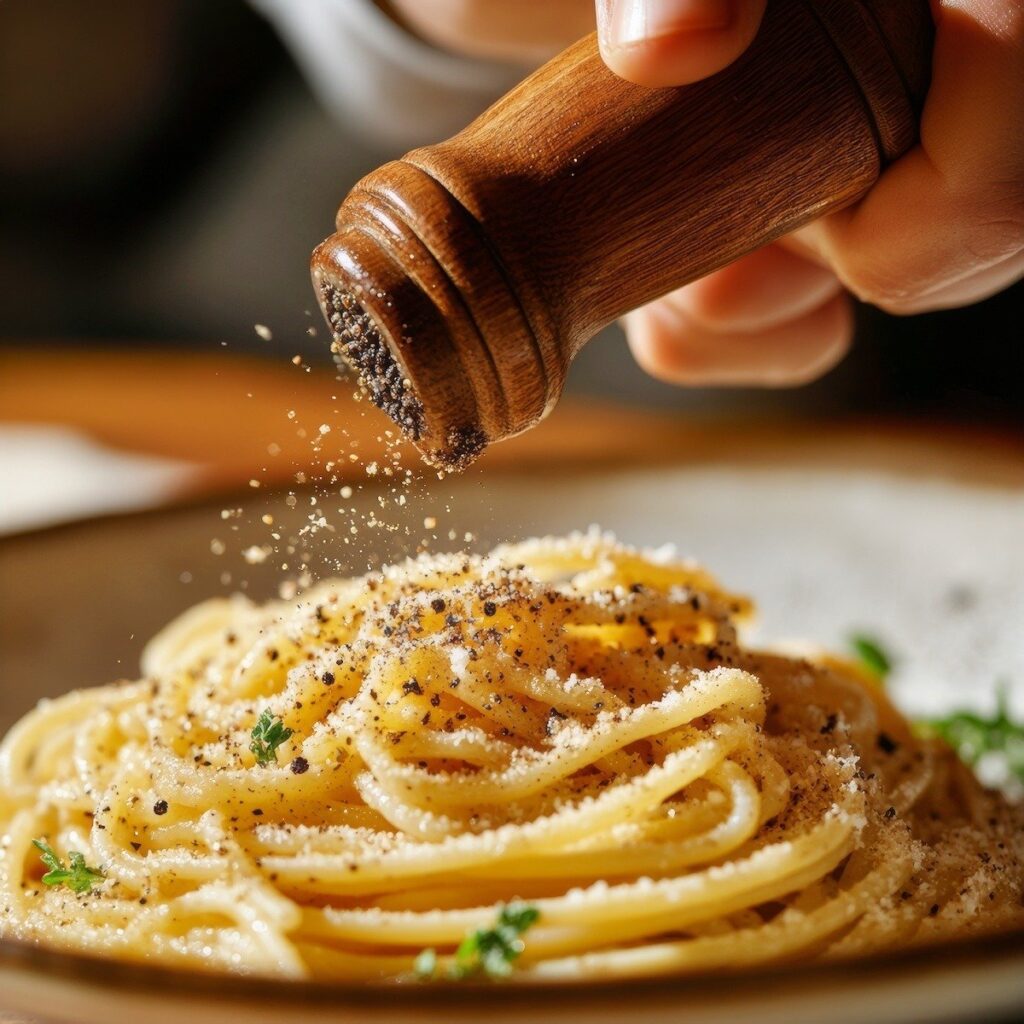
Strong Tasting Tellicherry Black Pepper
The strongest-tasting pepper is often considered to be the Tellicherry black pepper. This high-quality, large-sized black peppercorn is grown primarily in India’s Malabar Coast. Tellicherry peppercorns are left on the vine longer than others, allowing them to fully ripen and develop a stronger, more complex flavor profile.
Tellicherry pepper has a bold, spicy flavor with a hint of citrus and a slightly sweet undertone. It is often described as having a “robust” flavor that can stand up to strong and bold flavors in dishes, such as hearty stews, marinades, and grilled meats.
In addition to its flavor, Tellicherry pepper is also prized for its aroma, which is more intense and complex than other types of pepper. When freshly ground, it releases a strong, pungent aroma that can fill a room.
They are considered one of the highest-quality and most flavorful types of black pepper available, and they are a popular choice for chefs and home cooks alike who want to add a bold and complex flavor to their dishes.
The Rarest and Most Expensive
The rarest and most expensive pepper in the world is the “Tellicherry Garbled Special Extra Bold” (TGSEB) pepper, a type of black pepper named after the Tellicherry region in India.
TGSEB pepper is rare because it is made from only the largest, most mature peppercorns, carefully handpicked from the vine. The garbling process, which involves removing any impurities and broken or damaged peppercorns, is also done by hand. This meticulous attention to detail results in a pepper with a more complex flavor profile and a higher oil content, which makes it more aromatic and flavorful.
Because of its rarity and unique flavor profile, TGSEB pepper commands a premium price. It is often sold at specialty spice shops and gourmet food stores and can cost several times more than regular black pepper. The high price is also due to the time and effort required to produce it, with only a limited amount available annually.
TGSEB pepper is a luxury ingredient often used in high-end restaurants and gourmet cooking. It is prized for enhancing the flavor of dishes and adding a touch of sophistication to any meal.
Used In Cooking
Pepper is a versatile spice used in cooking in various ways to add flavor and complexity to dishes. Here are some of the most common ways that pepper is used in cooking:
- Seasoning: Pepper is commonly used as a seasoning for various dishes, from soups and stews to pasta and vegetables. It can be added to food before or after cooking and is often used with other spices and herbs to create complex flavor profiles.
- Rubs and marinades: Pepper is a popular ingredient in rubs and marinades for meat, poultry, and fish. Combined with other ingredients, such as garlic, herbs, and olive oil, it can help infuse the meat with flavor and create a delicious crust when grilled or roasted.
- Sauces and gravies: Pepper often adds depth and complexity to sauces and gravies, such as in a classic pepper sauce or a rich beef gravy. It can be added early in the cooking process to help develop the sauce’s flavor or gravy or sprinkled on at the end for a burst of flavor.
- Baked goods: Pepper is sometimes used in baked goods, such as breads and cakes, to add a subtle, spicy flavor. It is often used with other warm spices, such as cinnamon and nutmeg, to create a unique flavor profile.
- Drinks: Pepper is sometimes used to flavor drinks, such as spicy Bloody Mary or warm mulled wine. It can also be used to add a kick to cocktails and other beverages.
Pepper is a versatile and widely used spice that can add depth and complexity to various dishes. Whether used alone or combined with other spices, it is an essential ingredient in many cuisines worldwide. It is prized for its ability to enhance the flavor of food naturally.
Storing Fresh Peppercorns[/caption]
What Does It Taste Like?
Pepper has a distinct taste described as spicy, pungent, and slightly earthy. Additional flavor notes may also be present depending on the type of pepper.
- Black pepper, for example, has a sharp, biting flavor with a slightly bitter and earthy undertone. It is often described as having a “peppery” taste, which most people think of when they hear “pepper.”
- White pepper has a milder and less complex flavor than black pepper, with a slightly musty and earthy taste. It is often used in dishes where a more subtle pepper flavor is desired.
- Green pepper, preserved in brine or vinegar, has a milder flavor than black or white pepper and a slightly sour taste. It is often used in pickling and marinades.
- Sichuan pepper has a unique flavor profile that is both spicy and numbing. Its flavor is citrusy, almost lemon-like, with a slightly bitter undertone.
- Pink pepper has a fruity, floral flavor with a mild spiciness.
How Does Pepper Add Flavor to Foods?
Pepper adds flavor to food primarily through the presence of a chemical compound called piperine, which is found in high concentrations in the pepper plant’s fruit. Piperine has a strong, pungent flavor responsible for pepper’s spicy and slightly bitter taste.
When pepper is added to food, the piperine interacts with the taste buds on the tongue, triggering a reaction that sends signals to the brain. This process enhances the flavor of the food by stimulating the taste receptors and making the food taste more complex and flavorful.
In addition to its flavor-enhancing properties, pepper has other benefits when added to food. For example, it can help to stimulate digestion by increasing the production of stomach acid, which can aid in the breakdown of food and promote better nutrient absorption. It may also have anti-inflammatory properties, which can help reduce inflammation and promote overall health.
Pepper is a versatile and widely used spice that can add depth and complexity to various dishes. Whether used alone or combined with other spices, it is an essential ingredient in many cuisines worldwide. It is prized for its ability to enhance the flavor of food simply and naturally.
Five Fun Facts
- Pepper has been used for thousands of years and was once so valuable that it was used as currency. In ancient times, peppercorns were often traded as a form of currency and sometimes called “black gold.”
- Pepper was once believed to have medicinal properties and was used to treat various ailments. In the Middle Ages, it treated everything from headaches and toothaches to digestive problems and fever.
- Pepper is often used as a natural insect repellent. Some gardeners and farmers use pepper spray to deter insects and other pests from their crops.
- There is a popular misconception that pepper can make you sneeze. While it is true that some people may experience a sneezing reflex when they inhale pepper, this is not a universal response and is quite rare.
- Pepper was one of the first spices to be traded between different cultures, and it played an essential role in the spice trade routes that connected Europe, Asia, and the Middle East. At one point in history, the spice trade was so lucrative that it was known as the “spice route,” it helped shape the global economy and trade relationships between different countries.
Storing Pepper
Proper storage is critical to preserving the freshness and flavor of pepper. Here are some tips for storing pepper:
- Store in airtight containers: Pepper should be stored in airtight containers, such as glass jars or metal tins, to prevent exposure to air, moisture, and light. Exposure to these elements can cause the pepper to lose its flavor and aroma more quickly.
- Keep away from heat: Pepper should be stored in a cool, dry place away from heat sources, such as the stove or oven. Exposure to heat can cause the oils in the pepper to evaporate, leading to a loss of flavor and aroma.
- Avoid storing in the refrigerator: While it may seem logical to store pepper in the refrigerator to keep it fresh, this can cause moisture to accumulate in the container, which can lead to mold and spoilage.
Freezing It
It is generally not recommended to freeze pepper, as freezing can damage the cell walls of the peppercorns and cause them to lose some of their flavor and aroma. Additionally, when the frozen pepper is thawed, moisture can accumulate on the surface of the peppercorns, causing them to become mushy and lose their texture.
If you need to store pepper for an extended period, it is best to store it in an airtight container in a cool, dry place, away from heat and moisture. This will help preserve the pepper’s flavor and aroma for as long as possible. If you need to grind the pepper, it is best to do so just before using it, as this will make sure that the pepper is as fresh and flavorful as possible.
